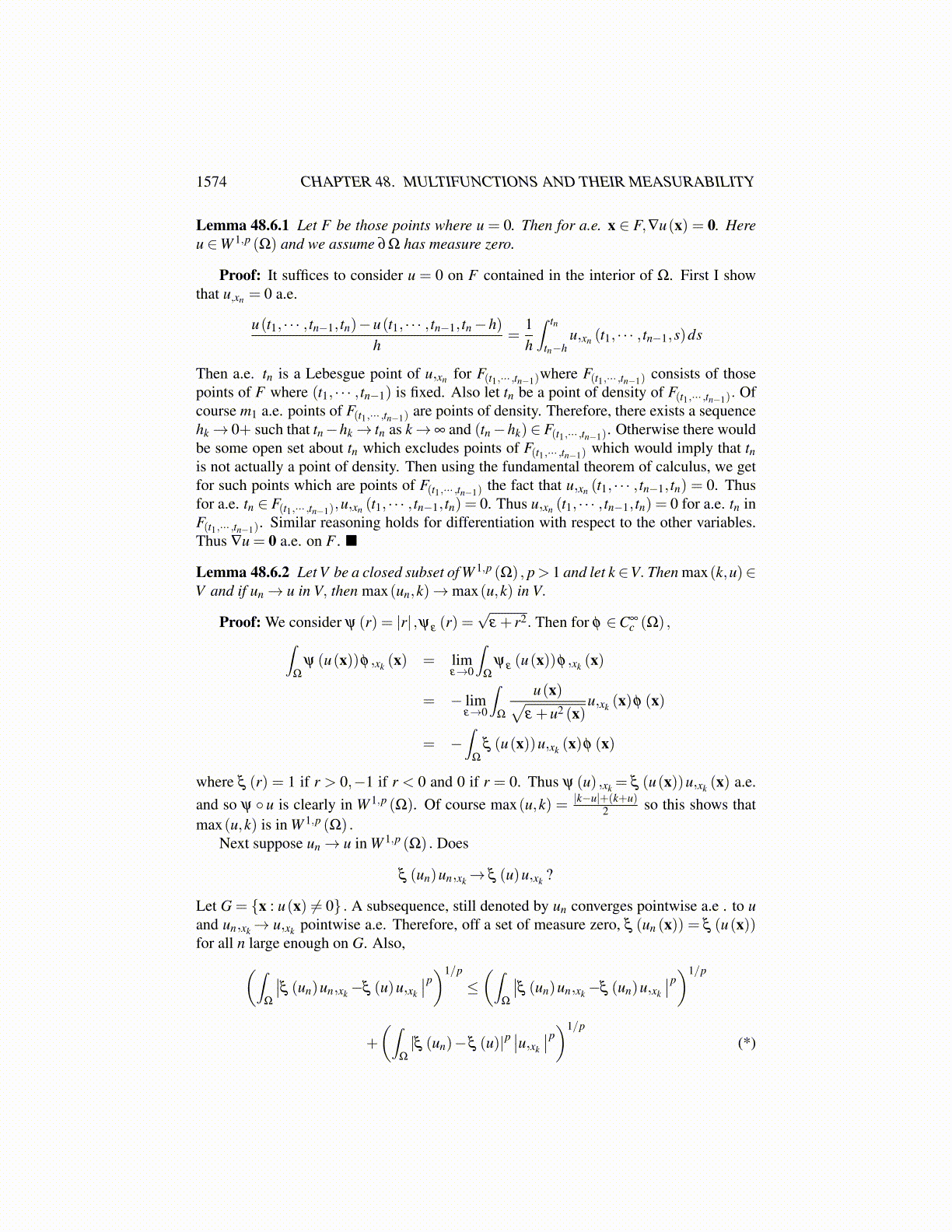
1574 CHAPTER 48. MULTIFUNCTIONS AND THEIR MEASURABILITY
Then by the semicontinuity properties of a,b we obtain from routine considerations thatw(x) ∈ [a(γu(x) , t) ,b(γu(x) , t)] a.e. To see how you can do this, let
E =
{x : w(x)≥ b(γu(x) , t)+
1k
}.
Then∫Σ1
XE (x)(−b(γun (x) , t)) ≤∫
Σ1
XE (x)(−wn (x))→∫
Σ1
XE (x)(−w(x))
≤∫
Σ1
XE (x)(−b(γu(x) , t)− 1
k
)By lower semicontinuity of −b(·, t) and the boundedness assumption, we can use Fatou’slemma to take liminf of both sides and conclude that∫
Σ1
XE (x)(−b(γu(x) , t))≤∫
Σ1
XE (x)(−b(γu(x) , t)− 1
k
)an obvious contradiction unless α (E) = 0. Then taking the union of the exceptional setsfor all k, it follows that w(x) ≤ b(γu(x) , t) a.e. The other side of the inequality can beshown similarly. Letting zn ∈ B(un, t) and v ∈V, is it true that
lim infn→∞⟨zn,un− v⟩ ≥ ⟨z(v) ,un− v⟩
for some z(v) ∈ B(u, t)? Suppose not. Then from the above, there is a subsequence suchthat the limit equals the liminf but which has the inequality turned around for some v andall z ∈ B(u, t). Then from what was just shown, letting wn go with zn, there is a furthersubsequence such that wn→ w weakly in L2 (Σ1) and and γun→ γu strongly in L2 (Σ1) and
w(x) ∈ [a(γu(x) , t) ,b(γu(x) , t)] a.e. x
Then ∫Σ1
wn (x)(γun (x)− γv(x))→∫
Σ1
w(x)(γu(x)− γv(x)) = ⟨z,u− v⟩
where w ∈ B(u, t) and z = γ∗w so the liminf condition holds. Thus this second operator ispseudomonotone.
Do these have measurable selections? This is obvious. Letting u∈V, t→ γ∗a(γu(x) , t)is measurable into V ′ and is in B(u, t). Similarly t→A(u, t) is measurable into V ′. Note thaton the second operator, it was really only necessary to assume that there exists t → c(r, t)measurable with c(r, t) ∈ [a(r, t) ,b(r, t)] and totally eliminate the assumption that either aor b is measurable in t.
Now let t→ f (t) be measurable into V ′. Say
⟨ f (t) ,v⟩=∫
Ω
h(t)vdx+∫
Σ1
β (t)vdα